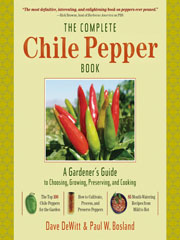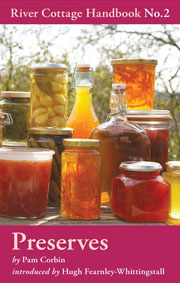Chili pepper seeds are now easier to come than ever. Once thought of by gardeners as specialist plants growing chili peppers is easier than most people think. The popularity of growing chili peppers has boomed over recent years, leading seed suppliers and garden centers to increasingly stock chili pepper seeds.
A few years ago you were luck if you found a generic packet of “Chili Seeds” in your local garden center. Nowadays however many are stocking several of the more common varieties such as Cayenne, Jalapeno and Habanero. If you require something a bit more specialist such as chocolate habanero or tepin or bhut jolokia pepper seeds a simple search on the internet will usually lead you to what you want. There are a number of reputable companies now selling good seed on Amazon.
Hot pepper seeds lifespan
As with most types of seeds if stored in to cool, dark, dry place the seeds can successfully last a few years. However it is advisable to try to buy only what you intend to use for a particular growing season. As with any types of plant seed it is worth investing in good quality chili seeds from a reputable supplier as these tend to have a higher seed germination rate and produce stronger healthier plants that are more disease resistant and will produce more chillies.
Germinating chili pepper seeds
The first thing you will need to consider is when you should start to germinate your pepper seeds. If growing in North America or Europe then your aim should be as early in the year as possible. If you are growing (or just starting your plants off) indoors or in a greenhouse then you will be able to plant your pepper seeds as early as January/February. If you plants are destined to be kept outside then your exact timings will be dependent on your local weather conditions. If starting off indoors start early but remember you will not be able to put any plants outside until the last frost has passed so be sure you have enough space and light available until then
As with germinating any type of seeds the key to success is heat & moisture. Plant your chili seeds in a standard multi purpose compost, moisten with a mister (as opposed to soaking) and place somewhere warm. Ideal places are those that provide a constant warm temperature such as in an airing cupboard, on top of a fridge or computer monitor or in a cupboard. In addition covering the seeds (either with a propagator lid or clear plastic bag) will help to keep the moisture in the soil.
There are several thing you can do in an attempt to increase your germination rates. Some of the techniques described below are believed to work, some are thought of as old wives tales. However as with any form of gardening none are an exact science and experimentation is best to see what works best for your particular circumstances.
Pre Soaking your chili seeds in a little water for a few hours can be a good way to reduce the germination time. The reason this works is that it quickly softens the seeds outer casing while at the same time prompting the seed to swell in to life. There are various ideas that soaking your seed in weak tea solutions or vinegar can help increase germination rates or even help prevent disease in your plants. These may be worth a go and can be fun to experiment with however regular tap water usually does as good as any.
Temperature of your soil is vital to germination. Annum varieties which include ornamental pepper seeds such as numex tend to germinate fine at lower temperatures but other varieties such as habanero or bhut jolkia will require warmer temperatures in the region of 70-90oF (20-32oC). The temperature will have a massive impact on the speed and success rates of germination so be sure to put your chili seeds somewhere warm during this phase.
Once the seeds have germinated you may want to look at our guide to growing chilli plants.





